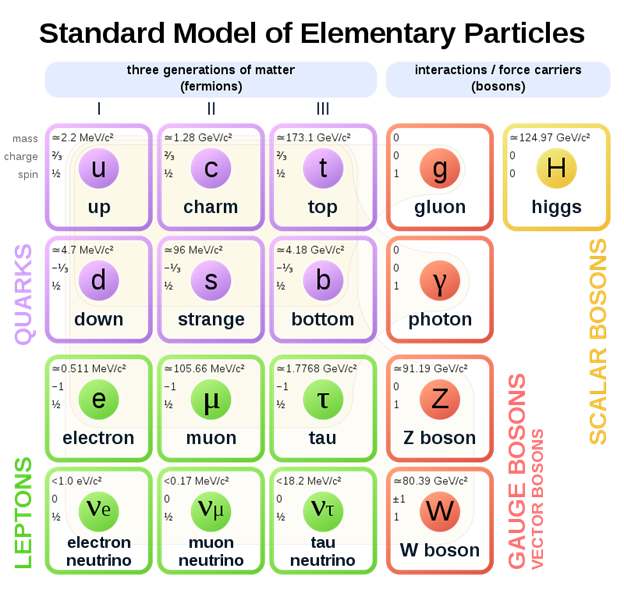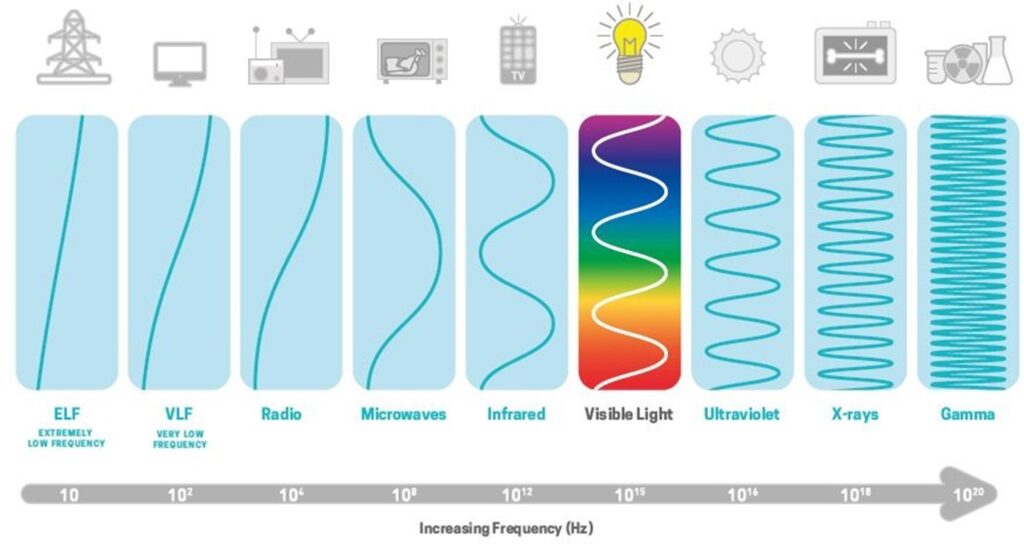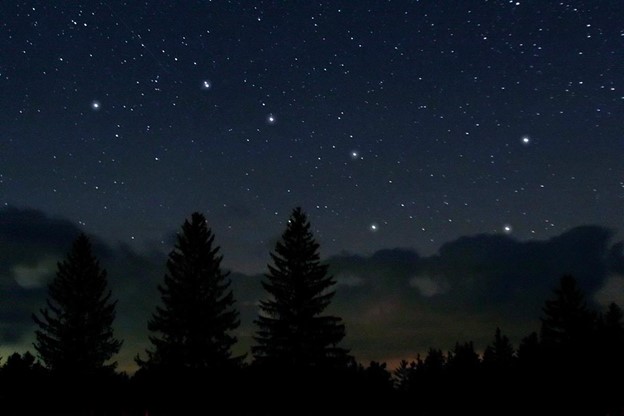The Big Bang
For eons, there was nothing. Then, about 13.8 billion earth-years ago, there was an explosion that created space and time and energy. There are several ideas as to how this explosion came to pass, but none of these theories has been proven, because, as you can imagine, it is a bit tricky to try to understand how something came from nothing. However, scientists have learned a lot about what happened immediately after The Big Bang.
In the initial explosion, there was energy and dark energy. Dark energy may have existed before the Big Bang and makes up about 80% of the universe.[f]
Fermions are particles that obey Fermi-Dirac statistics. Bosons are particles that are often force carriers and obey Bose-Einstein statistics. One type of boson is the photon.[f]


While we tend to think of photons as visible light, photons are actually packets of energy in the electromagnetic field. Figure 3 shows the categories of electromagnetic radiation. Regardless of the category, the energy is carried by photons.

Immediately after the Big Bang, only elementary particles and electromagnetic radiation existed, and, as far as we know, all electromagnetic radiation was spatially uniform. Nothing had mass and there was only energy, both regular energy and dark energy. As particles of matter and anti-matter collided and annihilated each other, photons were released carrying energy. This energy remains today and is called Cosmic Background Radiation.
As the universe cooled and particles collapsed together due to gravity, stars were formed. The fusion of particles inside the stars releases electromagnetic radiation, some of which is visible light. Our own sun is one such star. Earth is so close to the sun that the amount of radiation in the visible part of the electromagnetic spectrum blocks our view of the rest of the universe during the day. As the earth rotates on its own axis, half of the earth is shrouded in light from the sun, while the other half shrouded by star light. With the disappearance of photons from the sun from daytime to nighttime, we can then see other stars in the universe, both individually and in clusters. Our earth and sun reside in a cluster of stars known as the Milky Way galaxy. When we look into the sky at night, we can see the Milky Way as a band of stars because we are looking through the edge of the Milky Way.
Stars emit visible electromagnetic radiation uniformly in 3D space. From far away, a star can be modeled as a mathematical point, emitting electromagnetic radiation uniformly in space.

Over millions of years, biological systems evolved with the day/night cycle, with about half of the 24 hour day spent bathed in sunlight, and the other half bathed in moonlight and starlight.
If the earth was covered in sunlight for the entire 24 hours, we may not have discovered that there was anything beyond our own planet. But since half of the 24 hours was not lit by the sun, humans could see the rest of the universe. This led to curiosity and discovery about our place in the universe.

Artificial Light at Night is rapidly covering up the night time and is leading us to planet that is lit 24 hours. Humans can no longer see the rest of the universe, either with our own eyes or with telescopes.